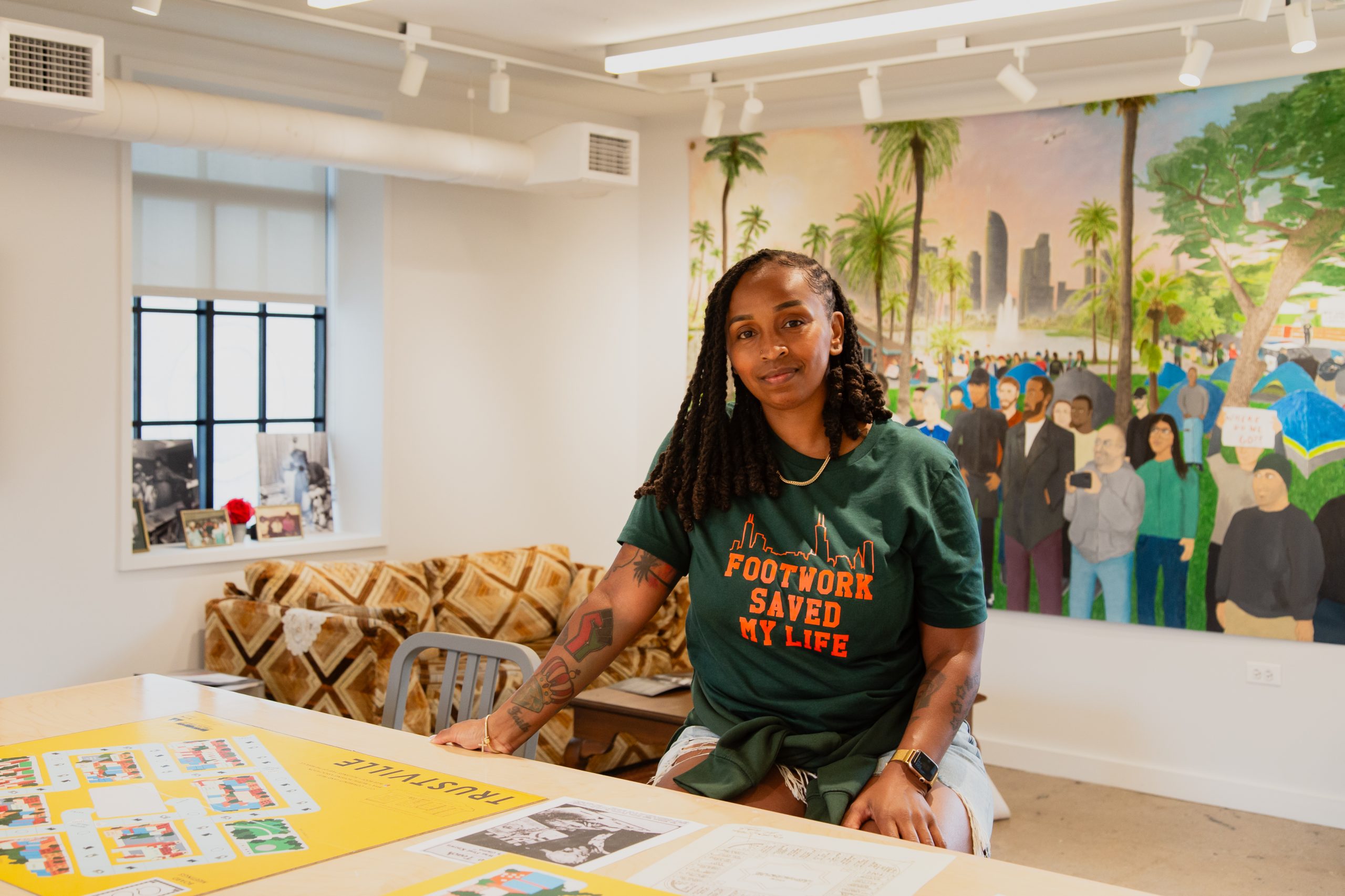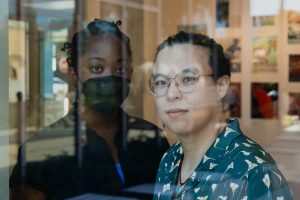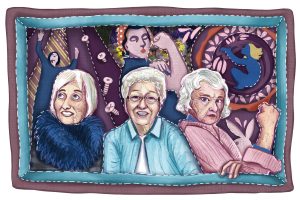
The Chicago Archives + Artists Project (CA+AP) connects archivists and artists to reimagine futures and histories. This year’s research continues our current theme of “embodying the archive.“
This series of interviews profiles this year’s archives + artists pairings, which include the National Public Housing Museum’s oral history collection (archive) + Dr. ShaDawn Battle (artist), Honey Pot Performance (archive) + Siobhan McKissic (artist/archivist), and one trio: Chuquimarca’s art library (archive) + Crystal Vance Guerra (poet) + Mariana Mejía (archivist).
For this installment, NaBeela Washington sat down with Dr. ShaDawn ‘Boobie’ Battle, an assistant professor of Critical Ethnic and Black Studies at Xavier University. Originally from and currently based on the South Side of Chicago, Dr. Battle is a former Chicago footworker turned cultural practitioner and self-described “artivist”—merging the artistic craft of Chicago footwork with social justice work. Her research documents the history and evolution of Chicago footwork, using the art form as a vehicle to interrogate state violence and tell stories about Black people’s material conditions in the city. The conversation explores the intersection of footwork and public housing histories, the politics of home place and dispossession, and how artists can preserve community narratives while protecting vulnerable populations. Their discussion addresses the balance between documenting trauma and making space for joy, and the unique role that art plays in embodying stories that archives cannot safely hold. Dr. Battle’s participation in this iteration of CA+AP builds upon the research and work done during her Artist as Instigator residency at the National Public Housing Museum in 2023. The following interview took place on August 18, 2025 and has been edited for length and clarity.
NaBeela Washington: For those not familiar with Chicago footwork, can you explain it?
Dr. ShaDawn Battle: You got Zowie, you got JIT in Detroit and Memphis. I don’t know if they say jook or juke, but juke is a term that was coined by Chicago DJs here and dance culture here. Chicago footwork is an art form performed to what we call Chicago juke tracks, which are derived from Chicago’s house music culture. House music is the cultural antecedent—the predecessor of Chicago footwork tracks or Chicago juke music. Tracks morphed into ghetto house music, where guys living in the projects used their everyday realities to add vocals to the house music tracks and sped them up. The vocals reflected their everyday lifestyles of living in the projects, so they were raunchy, they were sexualized, they were about growing up in the hood and the projects. The music sped up, and so did the dances.
At first, it was jacking and hip hop dances. Then they started doing different things with their feet. The first Chicago footwork dance was the Holy Ghost, which originated on the west side of Chicago. Over time, the art form evolved to different basic moves—we call them basics or fundamentals. Once you master those moves—the Gank, the Holy Ghost, the Irk and Jerk, the Running Man, the Mick and Knights, and a few others—you can string together multiple combinations.
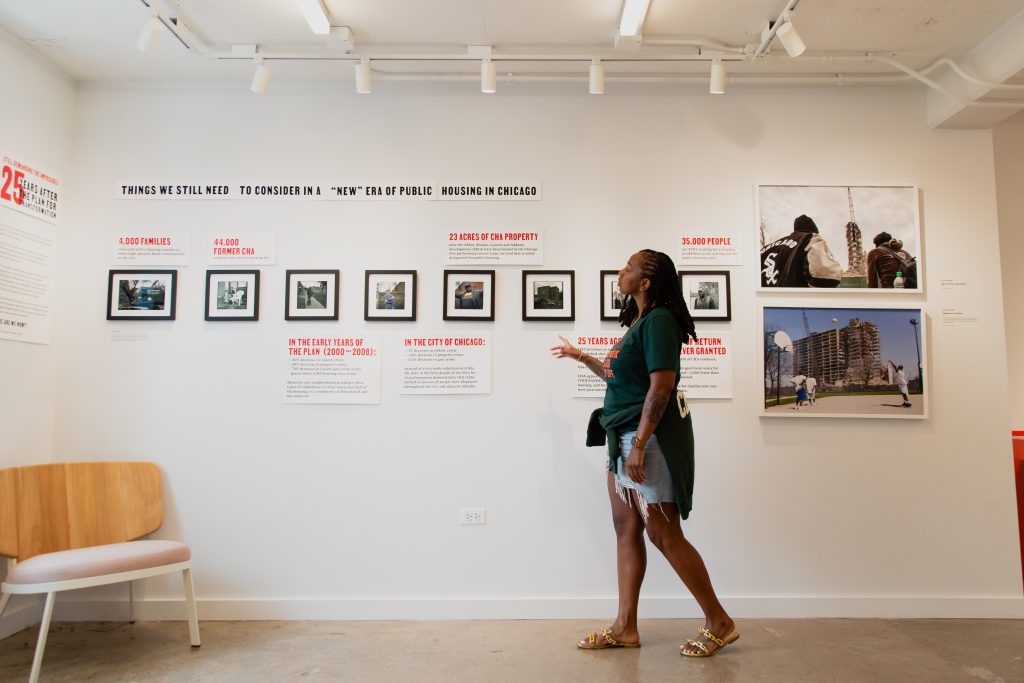
Dr. SB: It’s an underground form that is now a global art form. You can find Chicago footwork not just on the south and west sides of Chicago, which is where it was born, but domestically—Missouri, LA, Phoenix, all over the US. I’ve done my due diligence trying to spread it to Ohio. You can find it internationally in Japan, the UK, the favelas in Brazil, all over the world. What we like to brag about is keeping the prefix “Chicago footwork” important to describe it as an art form that was homegrown and born from the soil and from several different social and political factors that young Black people have to navigate growing up in Chicago, which is what I’m documenting.
It’s now performed at 160 beats per minute, although some dancers are speeding it up—some can dance to 175 beats per minute. Chicago footwork tracks are no longer played through the same patterns of house music, which is that four-on-the-floor format. The patterns are more sporadic. It’s abrasive, it’s an aggressive art form. When you hear it, it’s gravitational. You could be in church—if you hear some footwork tracks, you go. It pulls you toward it.
In my scholarship, I’ve compared it to Afro-Caribbean cultural practices and spiritual practices. For some Chicago footworkers, it is a spiritual dance. It’s a way they connect and learn themselves and commune with ancestors. It’s a sense of freedom, a mode of expression. I call it a vernacular language of the body. It allows young Black people to speak out and express themselves when normative modes of expression are not available to them. I’ve been using it to speak back to state violence. We did a short clip during the riots of 2020 downtown Chicago of a footworker who was accosted by a police officer. His way to speak back to that violence, instead of putting his life on the line—well, he still kind of did—was to ascend a police car and footwork on top of that police car. That was his way of saying, you know, eff you for hitting me with her baton.
It’s a way to tell stories about our mundane existences. It’s a way to relieve trauma. I like to say metabolize the trauma.

NW: You’re paired with the National Public Housing Museum [for CA+AP]. How is your documentary grounded in footwork drawing you to this particular archive?
Dr. SB: I was already working on a film and started doing interviews with different people who grew up in the projects—DJ Rashad, DJ Slugo, folks who grew up in the projects, which was a huge incubator for Chicago footwork. We’re not talking about an art form that was cultivated in spaces like Juilliard. It’s from the trenches, from the back alleys, from the project buildings, from rundown skating rinks, from old storefronts where battles have been housed.
I started talking to them and realizing how much space and place and home was connected to the art form. The title of the documentary I’m working on is “Footwork Saved My Life.” A lot of folks who grew up in the projects—DJ Clent was like, you couldn’t navigate, if you’re a young Black man especially, and women and girls, certain buildings or certain spaces because those spaces had been claimed by rival gangs. With gang violence comes gun violence. He’s walking through and he says, “I see a beam on my chest. They asked me who I was and what I was, and I’m like, this is DJ Clent, the DJ with a pack of tapes in my hand, and I was safe.” That’s one of the clips I have on YouTube.
I started to realize how important it is to connect Chicago footwork to spaces—spaces that we’ve been dispossessed from. They didn’t just knock down the structures that housed families when they knocked down the projects. They knocked down cultural production, where dance groups practiced, where art was bred and breathed and had a place to exist and thrive, [and] where Black kids had a place to call home when theirs were volatile. We’re talking about the war on drugs tearing families apart. I started thinking about the ways Chicago footwork is connected to multiple different politics of home, of home place.
I applied for the National Public Housing Museum’s Artist as Instigator residency. I applied the first time and didn’t get it. I applied again with a project in mind. I wanted to put on a production where I told the story of different forms of housing violence. I had four topics in mind. The first topic was the violation of [the] Black home place. I looked [back] from slavery to the assassination of Chairman Fred Hampton to the unjust 2019 raid of Anjanette Young. I wanted to situate violence that Black people experience in their home places, to echo bell hooks, on a historical continuum.
I worked with six or seven young people, as well as Chairman Fred Hampton Jr., Anjanette Young, activists, organizers, Tara Stamps—the city commissioner—scholars from Loyola and University of Illinois doing work on housing policies. I worked with a wide range of people in a three-phase project. The first topic was the violation of Black home place. The second one was environmental racism, targeting Altgeld Gardens. One of the guys I work with, Christopher “Mad Dog” Thomas, who was my partner on the project, grew up in the Gardens. A lot of my friends, my battle crew, were from the Gardens.
Everybody drives past the Bishop Ford, and when they pass 130th Street exit, if you’re a kid, you’re playing a game like, “Oh, you stink. You farted.” If you’re an adult, you’re holding your breath. But for people who live there, it’s a toxic smell you’re inhaling. The water is toxic, the soil is toxic. Just think of everyday activities, just drinking Kool-Aid. Mad Dog lost his mother to growing up in the Gardens. A lot of other people died from respiratory illnesses. The land on which the Gardens sits has the highest rate of cancers. It’s been declared as having the highest concentration of toxicity in the nation. That was one of our topics.
The third one was land sale contracts, focusing on Englewood. Beryl Satter was already doing work around that topic. She was an Artist-as-Instigator resident before me, and I was inspired by her work, so I wanted to bring her work to life through art. And then the Plan for Transformation was how they knocked down the projects and displaced people, which led to more gang violence and the loss of culture.
There were workshops and field experiences where we went to the Hampton House Museum, to Altgeld Gardens, to Englewood, and we saw the houses that were victimized by land sale contracts. We got to hear different stories at the workshops. It wasn’t just cerebral where people were presenting facts and data. The young people got to actually go to those places and hear from community members who grew up in the projects, who grew up in Altgeld Gardens. Chairman Fred Jr. talked about what happened to his father, showed images. We went to the Hampton House.
After all the workshops, we started putting together a showcase. It was a two-hour showcase, and we only got time to get to two topics. The first act was violation of Black home place—slavery, the assassination of Chairman Fred, and Anjanette Young. The second act was Altgeld Gardens. We didn’t get to put on a showcase based on the other two topics. We ran out of time and funding.
After that, the museum hit me up like, “Yo, we’re going to be collaborating with this nonprofit, this project doing archival work. So many of the people we’ve already worked with, we’ve heard their stories, we’ve archived their stories, and there are so many other stories we can archive and bring to life through art in different ways.” That’s how this project commenced.
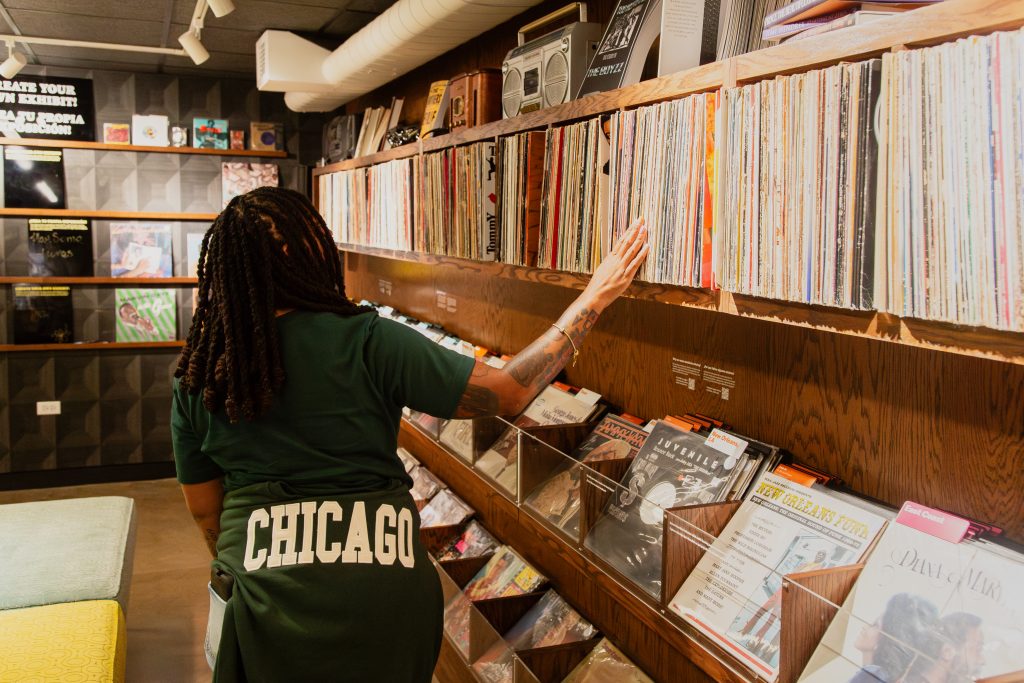
NW: How are you bridging your academic interests with preserving public housing oral histories?
Dr. SB: I’m an epistemologist by training, and specifically I do work on silencing practices—who gets to create knowledge, who gets to speak, who gets silenced, and the violence surrounding that, the attendant violence around silencing. If I can silence you, then I can construct narratives about you that can be harmful and fatal. I’m always thinking about the ways vulnerable populations don’t get to tell their stories, or the harm they face for telling their stories. I’m using that theoretical lens as a tool to help me think about preserving narratives and allowing narratives to speak through non-traditional channels so that they’re protected, so that they’re preserved in safe ways.
More generally speaking, I’m using my work to give real political education. For instance, one of the guys was talking about Judas and the Black Messiah. He’s like, “Yeah, when they killed Chairman Fred.” This is on my Instagram—a clip we edited. One of the things I wanted them to think about was rhetorical forms of violence. This is also a part of the work I do around epistemic violence. If you use a word like “they killed Chairman Fred,” you tarnish his reputation and the work he did, the revolutionary work he did, because his point was that no, he was assassinated. You’re not shedding full light. You’re not highlighting the revolutionary aspect of his life and his legacy if you just say that he was killed. Anybody can be killed. But the government, in collaboration with [the] Chicago Police Department, assassinated him. They continued to shoot him. It was a brutal reality we have to face, and if we don’t use the right language, then we absolve [the] Chicago Police Department of this assassination and the government of their culpability.
That critical race epistemic work informs storytelling. You have to use the right language. That informs the ways I bring art to life. I have to bring art to life in ways that adhere to truth-telling and that give vulnerable populations a voice that might not cohere with dominant narratives. We don’t want to say that Chairman Fred was a troublemaker and they killed him rightfully so. No. We want to say that he was bridging gaps. He was helping Black people self-determine and demand, helping to create institutions for Black people to be self-sufficient. He was unifying the underclass all over Chicago as a 21-year-old. And then they snuffed his life out. They put a gun to his mother’s stomach while Chairman Fred Jr. was in utero. That was his introduction, he says, to police violence. They smiled at the lynching of the 21-year-old when they carried his body out. It was a victorious moment for them.
We have to tell those stories and allow those stories to emerge from the archives, because a lot of Black kids in this city don’t know about what happened. We want to pull those out of the archives and embody those narratives in artistic ways, and the way we do that is by making sure we’re adhering to rhetorical accuracy. The language we use has to be on point.
I’m also bringing in other kinds of work that I’m reading into the spoken word I’m doing. One of the pieces I wrote for the showcase—we talk about Deborah Johnson, his mother’s name prior to becoming Mother Akua at the time of the assassination. Deborah Danner was a Black woman who was killed inside of a home. One of the things I say is, “From Deborah Johnson to Deborah Danner, the story don’t change. Blue shot Black because, or they tried to say blue shot Black because Black started blasting.”
Now the question becomes, what about the people whose stories are not about revolutionaries? They were just simply people who were dispossessed of their homes. They were just simply people who grew up in public housing. They had disabled children and lived on the 17th floor. How do we bring that to life? How do we bring that to life and be attentive to disability studies and the discourse surrounding disability studies? Do we use differently abled? Do we use disabled? Making sure that the art I’m producing, that we’re going to be producing, is also consistent with the discourse of the time, which is some of it academic and some of it comes straight from the people on the ground, the people who have to live these lives in the margins.
NW: What do you think artists and archivists have to glean from each other’s philosophy, training, and creative process, and how has this collaboration challenged or expanded your own practice?
Dr. SB: Archival work is a social science, but it’s also extremely humanitarian—humanity-centered work. You’re working with people. For me, it’s a social science in some ways, but it’s also really artistic work. What I’ve had to do is listen to their process of preserving the oral narrative, oral history, and I’ve had to adjust my process of getting information from people, sitting down, talking to people, listening. Sometimes going in with an agenda, going in with specific questions.
What I’ve noticed is that in many of the oral history narratives I’m listening to, people are just talking about their experiences—wide-ranging experiences. There is no theme driving the interviews. It’s just, “Hey, who are you and what can you share?” Whereas when I’m sitting down talking to people about Chicago footwork, or the intersection of Chicago footwork and public housing, my questions are tailored toward that. I allow them to go off on tangents, but the tangents are oftentimes still related to a specific theme.
That’s been a learning curve because now I’m getting stories that are not related to the themed work I was doing with the residency. Folks aren’t just talking about police violence or structural violence. They’re also talking about joy. They’re talking about double dutch and other things. Now I’m thinking, how do I expand my artistic arsenal to include some of these other recurring themes that don’t necessarily overlap with the work I was doing previously? How do I open up the dialogue so that we’re embodying other kinds of stories through art?
With my film, I’m looking at how the closure of Chicago Public Schools impacted this culture, how people losing homes and gang violence gave shape to this culture. But as I’m listening to these other narratives, they’re talking about growing up in school systems, in Chicago Public Schools, and all the stories are not bad. They’re like, “We had a funky good time.” One person is talking about an older aunt that came from somewhere in Missouri or something to visit and drove a long way and could not visit with them because the elevator was [broken] and they lived on the top floor of the Robert Taylors or something. This is different from the work I’ve been doing. How now do we create art from this story? It’s still about structural violence, but it’s different from the work I’ve been doing.

NW: Because some of your subjects have brought up other narratives or perspectives outside of violence, do you find it difficult to make space for joy or other subjects outside of what you’re normally used to documenting?
Dr. SB: I think Chicago footwork is inherently an art form of joy because it’s an art form of resilience. When they do it, they lose themselves, even when they’re telling the most harmful stories. Even when they’re creating a dance from a track that we made called “You Can Kill a Revolutionary, But You Can’t Kill a Revolution,” and they’re dancing to that—it’s still a sense of joy that they get from moving their bodies to the music to tell those stories.
I do think there is a different element of joy with this project because many of the stories are about childhood memories. People are telling stories about going to the candy lady in the 60s or double dutch, flipping on mattresses in the projects. I’m usually listening while I’m working out, and sometimes they’re painting pictures with their words. I’m just like, “Wow, how can we bring this to life through art?” It’s beautiful.
When you think of the projects, the way I’ve written about them is like what Jay-Z said: “Why they call it a project? ‘Cause it’s a project, an experiment wearing it even as objects.” I’m thinking of the warehousing of human beings for the purpose of segregation. Like what Ta-Nehisi Coates and other scholars said, it’s the second ghetto. How do we keep Black people away from white spaces? We warehouse them in these tall structures, and we allow them to deteriorate over time. Then we have just reason to knock them down and disperse these people when these structures are no longer serving our political and economic interest. That was my lens.
But now I’ve got to go back and say, “Wait a minute, they created [a] home.” They created [a] home place—a sense of safety, a space of joy, a space outside of white supremacy, the Irish, the Italians in Bridgeport who were harming Black kids at the time. They created safe spaces for themselves within these homes. If you go in the museum and look at the replica of some of the homes, it’s like, wow. It’s carefully curated spaces with Bibles and artifacts. They made it home. Now I have a different perspective. Joy becomes the complement to the violence.
NW: As both a scholar and practitioner of Chicago footwork, what role do you believe artists have to play in taking action to preserve their communities’ histories, and how does your documentary work exemplify this?
Dr. SB: There’s an old Harlem Renaissance feud: art for propaganda or art for art’s sake. I think art for art’s sake does have its place, but when you are Black and your existence is inherently political, you cannot help but to sometimes use art in the service of Black liberation. That almost always has to be the goal. Even if it is showcasing joy, that is still a political act when you’re Black.
I think I have a moral obligation to tell stories about people who live in the margins in this city. I want to use an art form that has been the saving grace of a lot of young Black people in this city to do just that. I need to make sure I’m doing so in the most authentic way. I need to make sure I’m truth-telling and being sensitive to the people whose stories could cause harm, which is why they are archived.
NW: How is participating in the Chicago Archives + Artist Project influencing your approach to your own research and creative work?
Dr. SB: It’s opening the discourse for me. It’s expanding the discourse and making me think of other narratives I have not explored—other histories of other kinds of people who have not been a part of the artistic world in which I exist, which I’ve been interrogating and documenting. It’s making me think about the even more mundane practices, cultural practices, or cultural necessities. When I say cultural necessities, I’m like, flipping on mattresses—that was art. They were Olympic champions in their hood. They needed to do that to survive. It’s making me think about other forms of art, other modes of living, other modalities of existence that I have not yet explored.
NW: Is there anything else about your experience with this project you’d like to share?
Dr. DB: I’m grateful to be doing this project. The goal is to do something similar but yet different, more expansive. I still want to use footwork and spoken word and other forms of visual art to bring stories to life that the storytellers may not have thought were important enough to be artistically showcased. I still want to do that. I’m just hoping that at the end of the tenure of this project, there are resources available for us to do just that. I think December is when we’re supposed to conclude. We’re gathering the narratives now, and I’ll start putting together a script that is reflective of this project soon.

About the author: NaBeela Washington is a Chicago-based journalist, photographer, and curator whose work explores what’s possible while holding institutions accountable.

About the photographer: Joshua Clay Johnson (b. 1994, Chicago, IL) is an interdisciplinary artist living and working in Chicago. Joshua earned his BFA in Painting from the University of Illinois at Urbana-Champaign in May of 2017. Website: Joshua Clay Johnson.
